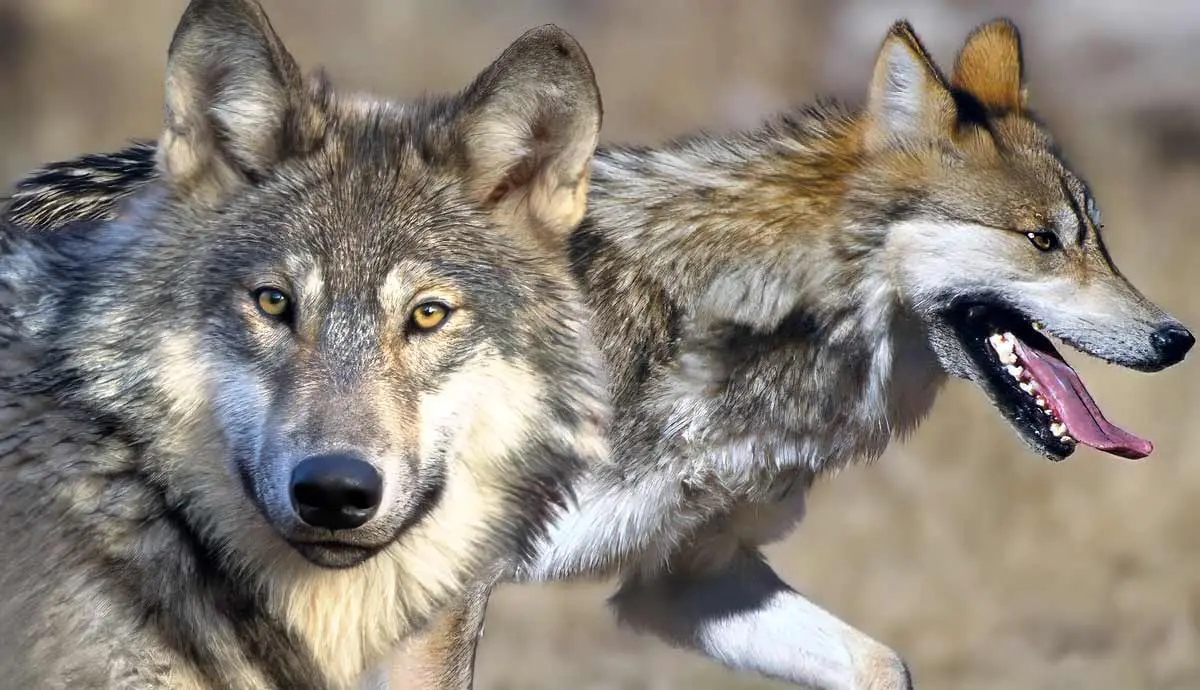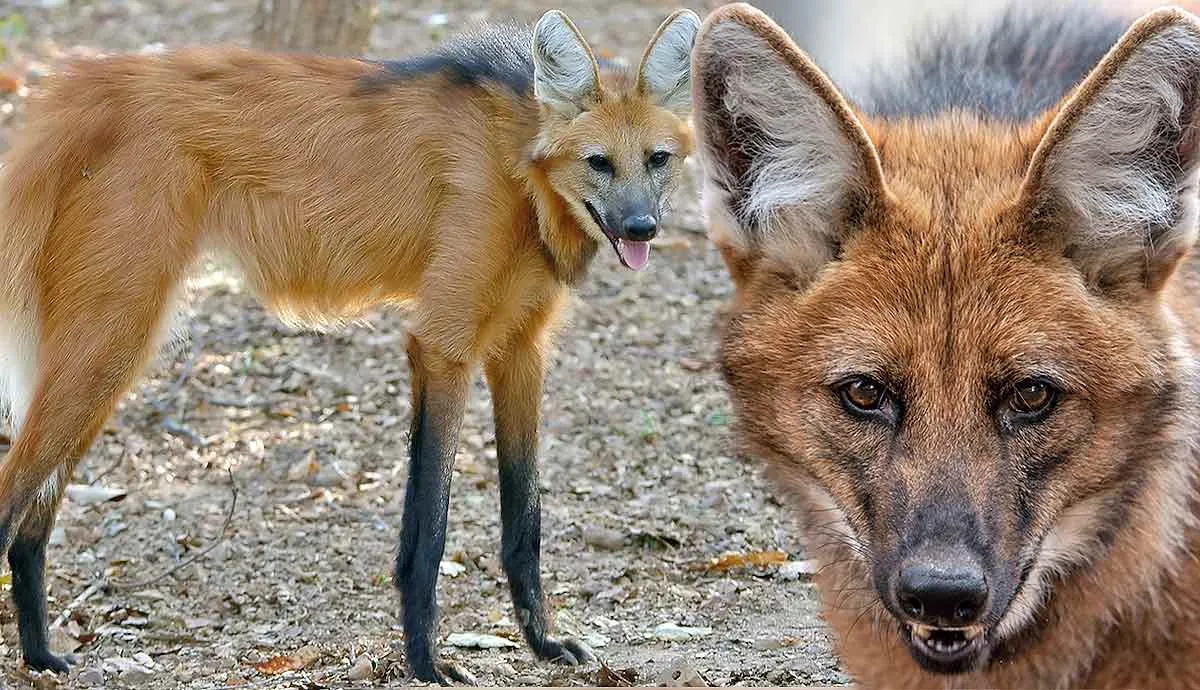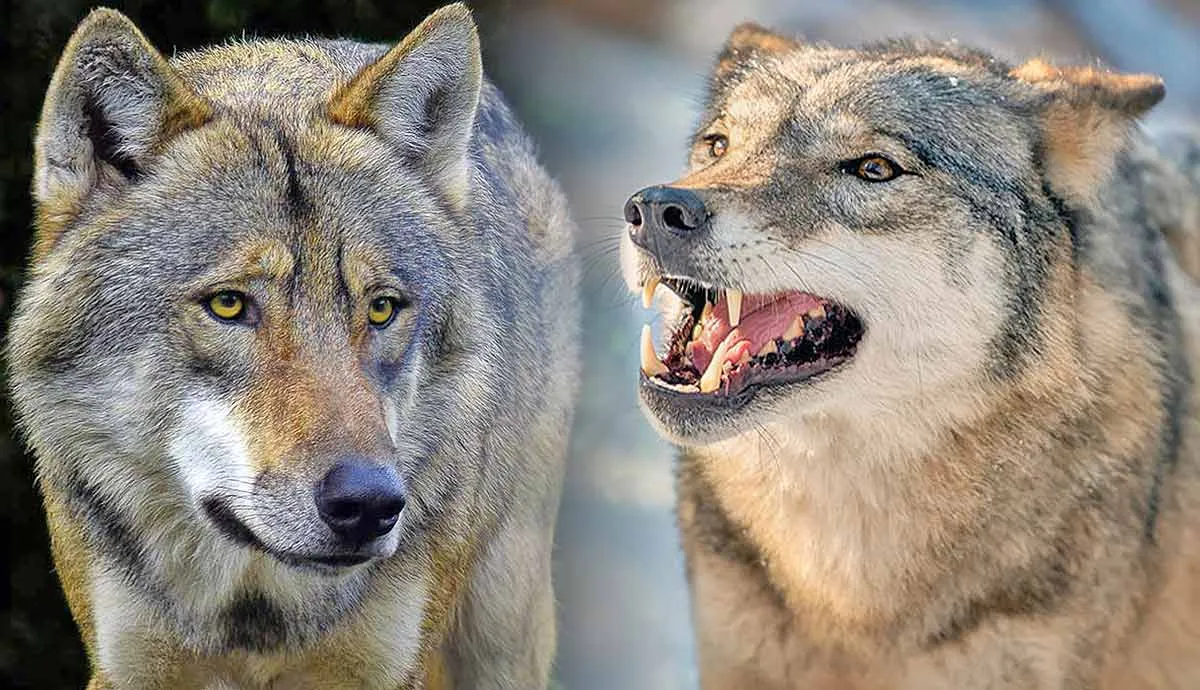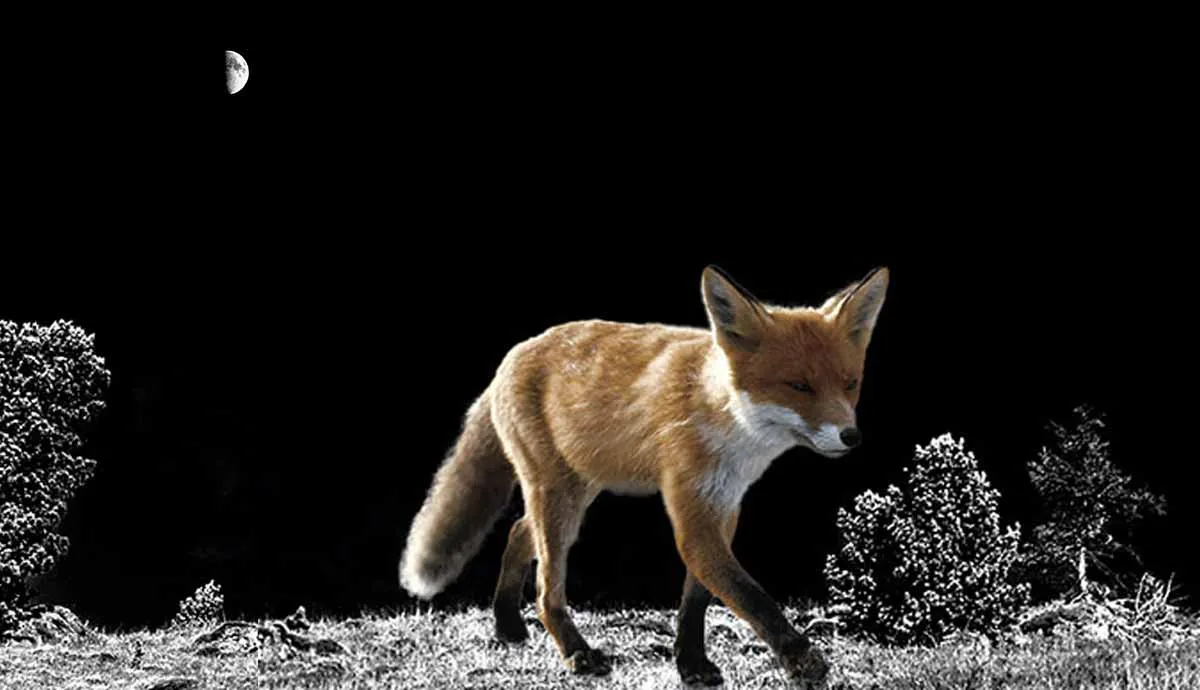Wolves are majestic creatures that captivate many nature lovers’ imaginations. In the USA, they inhabit diverse regions with distinct characteristics and conservation statuses. They can be found throughout the country, and two of its top nature reserves are home to these magnificent creatures. We’ll take a walk on the wild side to learn more about America’s resident wolf species, distribution, and conservation status. Whether you’re an enthusiast, nature lover, or curious about these fascinating creatures, run along with our pack and howl to your heart’s desire!
1. Gray Wolf

The Gray Wolf (Canis lupus) is the largest wolf species found in the USA and is prominent in North American folklore. Gray wolves were present in two national parks: Katmai National Park and Reserve, Alaska, and Yellowstone National Park when it was established in 1872. However, they were not very popular guests and were misunderstood. People also did not have the knowledge we have today about the interconnectedness between the ecosystem and different species. Their numbers started to dwindle because they preyed on livestock as agriculture expanded and flourished in the USA -- ‘noble’ species like deer and elk were preferred and even considered ‘desirable.’ Farmers and hunters killed wolves to allow the ‘noble’ species to thrive, and wolves were considered the common enemy of farmers, livestock, and the ‘noble’ species.
Between 1914 and 1926, around 136 wolves were killed in the park, and by the 1940s, wolf packs were rarely seen or reported. By the mid-1990s, wolves were almost eliminated from the USA. Luckily, a re-wolfing’ campaign was introduced in the park between 1994 and 1997, with 41 wild wolves from northwest Montana and Canada being released in the park. They help to keep the ecosystem in balance by preying on large mammals like elk, deer, moose, and bison. They’ll also hunt smaller animals such as hares, rodents, and beavers.

Gray Wolf Fact File
| Distribution | Found in several states, including Alaska, Montana, Idaho, Wyoming, Wisconsin, Michigan, Minnesota, and portions of the Pacific Northwest |
| Terrain | Forests, tundra, and mountains |
| Litter size | On average, five pups are born in April |
| Coat color | Wide range of coat colors, including gray, black, brown, and white. Black and gray coats are the most prevalent colors in Yellowstone |
| Physical attributes | 26–36 inches (66–91 cm) tall at the shoulder 4–6 feet (1.2 to 1.8 meters) from nose to tail tip Females range between 80 and 110 pounds (36–50 kg); males weigh between 100 and 130 pounds (45–59 kg) 40 mph (65 km/h) |
| Average lifespan | The average lifespan inside Yellowstone is four to five years. Outside the park is two to three years. |
| Conservation Status | Protected under the Endangered Species Act, but this varies among states |
2. Red Wolf

The Red Wolf (Canis rufus) is a critically endangered wolf species found in the USA, concentrated in the eastern parts of North Carolina. Historically, Red Wolves were widespread across the southeastern United States, ranging from Texas to New York. Today, their range is limited to a specific area in northeastern North Carolina, primarily in the Alligator River National Wildlife Refuge. They have a reddish-brown coat, which gives them their name. They are smaller than Gray Wolves and exhibit a slender build. Red Wolves are primarily nocturnal and are known for their excellent hearing and communication skills.
The Red Wolf is one of the most endangered canids in the world. Due to habitat loss, human persecution, and hybridization with Coyotes, their population drastically declined. Conservation efforts, such as captive breeding programs and reintroduction initiatives, are ongoing to save this critically endangered species from extinction.
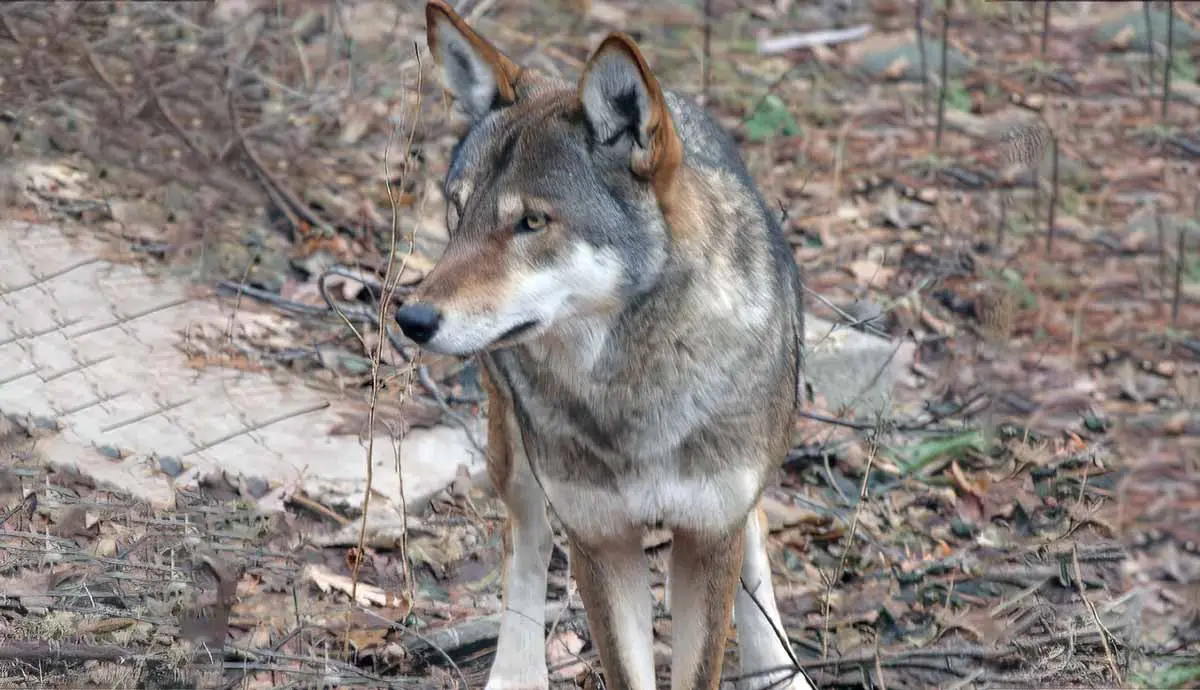
Red Wolf Fact File
| Distribution | The northeastern part of North Carolina |
| Terrain | Forests, tundra, and mountains |
| Litter size | On average, five pups are born in April |
| Coat color | Mostly brown and buff-colored, reddish color on the head, ears, and legs with some black along the back |
| Physical attributes | About 26 inches (66 cm) tall at the shoulder Around 4 feet (1.2 m) long from nose to tail tip On average, they weigh between 45 and 80 pounds (20–36 kg) |
3. Mexican Wolf
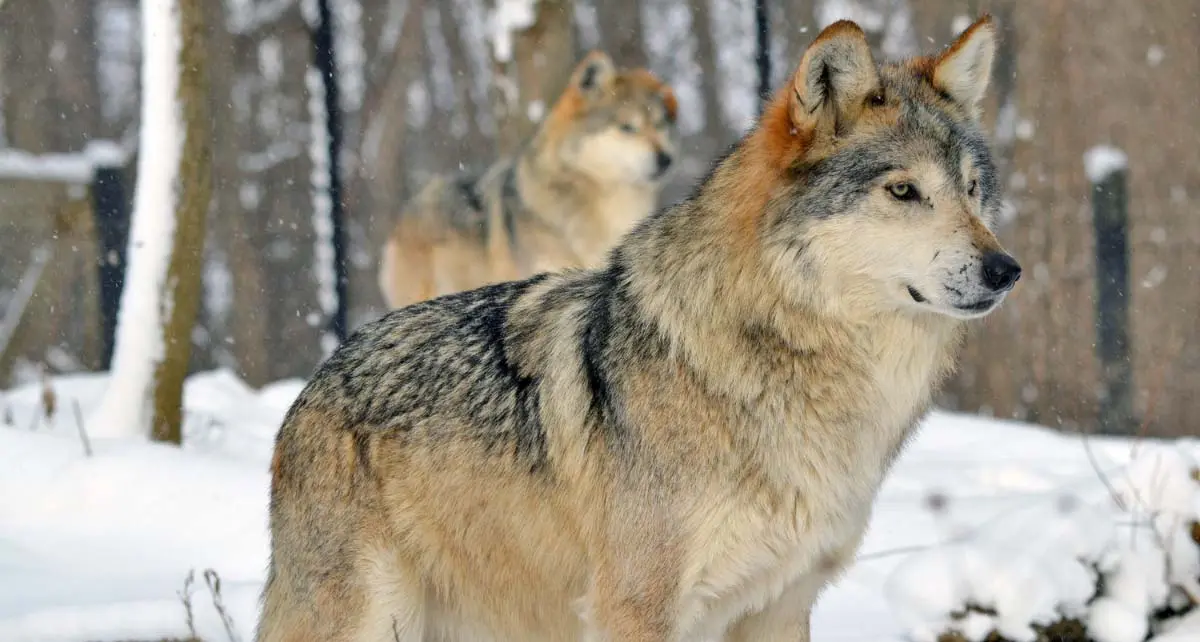
The Mexican Wolf (Canis lupus baileyi) is a subspecies of Gray Wolf native to the southwestern United States and Mexico. They are also commonly known as El lobo. Historically, Mexican Wolves roamed across parts of Arizona, New Mexico, Texas, and Mexico. Today, they are primarily found in the mountainous regions of eastern Arizona and western New Mexico.
Although Mexican Wolves are similar in appearance to Gray Wolves, they are generally smaller in size. They have a mix of gray, black, and tan fur and are adapted to thrive in desert and mountain environments. Like the Gray Wolf and the Red Wolf, the Mexican Wolf has faced significant population declines. It is listed as critically endangered and is protected under the Endangered Species Act. Ongoing recovery efforts include captive breeding, reintroduction programs, and habitat conservation.
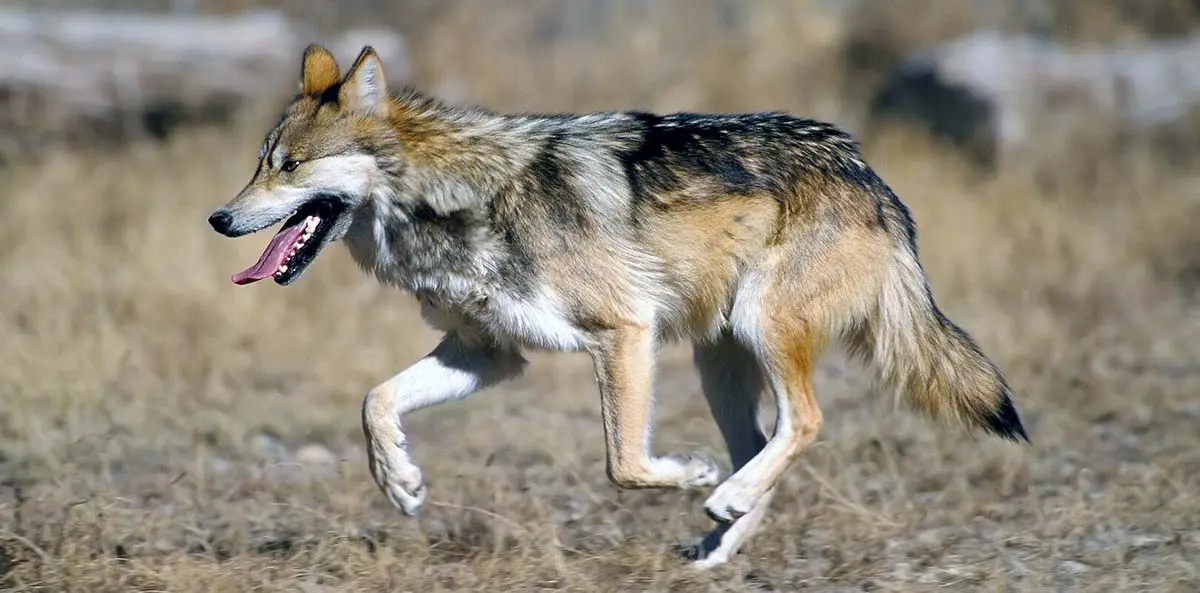
Mexican Wolves Fact File
| Distribution | Arizona, New Mexico, and parts of Central Mexico |
| Terrain | Deserts and mountainous woodlands |
| Litter size | Four to seven pups born in April or early May |
| Coat color | Gray with light brown colored fur on its back |
| Physical attributes | Between 26 and 31.9 inches (61–82 cm) tall at the shoulder Around 53.9–60 inches (137–152.4 cm) long from nose to tail tip On average, they weigh between 59.4–79.2 pounds (± 27–36 kg) |
| Top speed | 40 mph (65 km/h) |
A Final Howl from the Pack

Wolves in the USA are an integral part of the country’s natural and folkloric heritage. Understanding the different wolf species, their distribution, and their conservation status is crucial for their protection and the preservation of the ecosystems they inhabit. Each of these species faces unique challenges but also benefits from dedicated conservation efforts. By raising awareness, supporting conservation initiatives, and promoting coexistence, we can contribute to these magnificent creatures’ long-term survival and well-being. Let us cherish and protect the wolves that grace our landscapes, ensuring their place in the rich tapestry of American wildlife.
